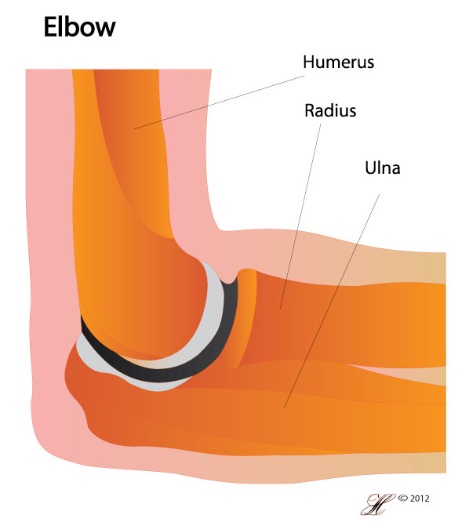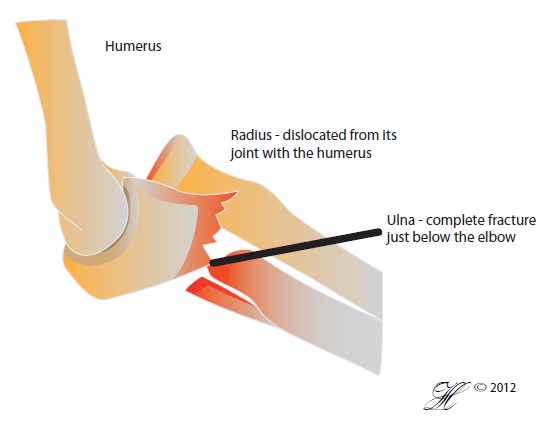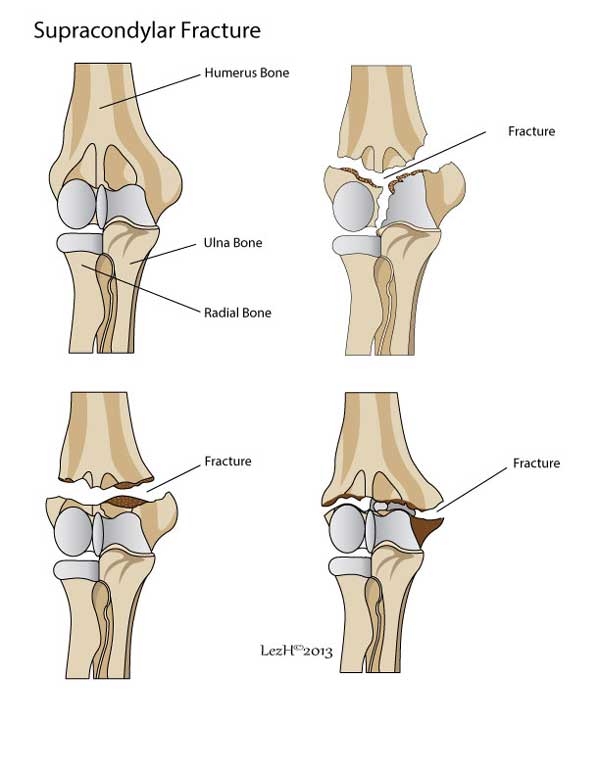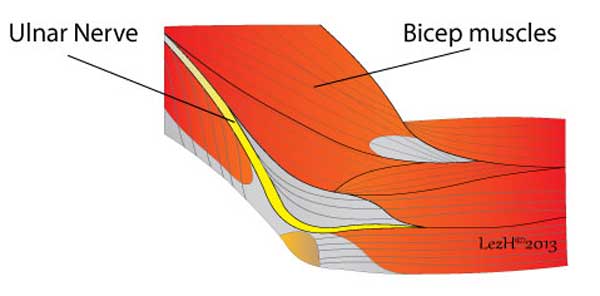Elbow fractures are commonly encountered in the acute care setting. Injury patterns for children and adults are quite different.
Three bones that make up the elbow joints:
- humerus
- radius
- ulna

Also when you bend your elbow, you can easily feel the tip of bone of the elbow. The bone is called the olecranon.
These bones are held together by ligaments. The muscles are attached to the bones by tendons. Without much protection, any of these bones can involve in fracture. Along with the fracture the ligaments and tendons may be torn.

Symptoms
Patient with the elbow fracture may complaint severe pain and limits elbow movements.
1. Painful on elbow movements
2. Swelling & bruising at elbow joints
3. Tenderness around the elbow
4. unable to straighten the arm
5. Numbness in fingers
Causes
Fracture of the elbow can be caused by direct trauma:
– Car/bike accident
– Fall down or by landing on an outstretched hand
– Struck by hard objects (e.g. baseball bat)
Risk Factors
Most fractures at the elbow joint occur in children.

Investigations
The patients will be examined first by the doctor. This will ensure the fracture locations and the extent of the fracture.
The orthopaedic doctors then ask for the x-ray of the upper arm, forearm, shoulder, wrist and/or hand, based on the examinations and patient’s complaints.
X-ray findings may reveal altered alignment of the joints, changing in size of the joint space, and marking line on a bony (represent the fractured line). A CT scan or a MRI may be needed if the fracture could not be seen on the plain X-ray despite the symptoms.
Complications
- Nerves and the blood vessels that run in the elbow joint could be injured in elbow fractured which can cause serious events.
- The wound could be infected and may promote the bugs going into the bones.
- The bones may also fail to unite properly which may result in some weakness or deformity of the arm.

Treatment
In emergency setting, the doctors will try to reduce the complications of the fracture with ice, pain medicine, a splint (like a cast), and a sling to keep the elbow in position.
Bear in mind that not all elbow fractures need a surgery. The doctors need to do some investigations before they decide to have the surgery on a patient’s elbow.
Conservative
Some of the elbow fractures only require just a splint or sling to hold the elbow during the healing process. However, the patient needs to come back few times to the hospital to have X-rays.
If the bones are showing the good signs of healing (none bony fragment are out of place), the doctors will allow the patient to begin gently moving the elbow and visits the physiotherapist.
Surgery
The surgery is generally safe. There are two conditions for surgical treatment:
- The fractures bone is out of place. The olecranon is important to help straighten the elbow as the muscle attached to it.
- The fracture is associated with a big skin cut or “open fracture”. As the risk of infection is higher in such fracture, the patient will need a course of antibiotics by vein and may require tetanus shot. In the theatre, the wound need to be checked and washed out, while the bone will typically be fixed during the same time.
For this surgery, the patient is put to sleep and may lie on the back, side or stomach. If the patient lies on the belly, the face may be swollen for few hours after the operation. However, this is normal and temporary.
The doctors may use pins/wires, screws, plate and screws, or stitches to put the pieces of the bone back together.
Seeking Advice
Your Family Doctor (GP)
Your Family Doctor will be able to diagnose and help treat your problem. He or she will be able to
- tell you about your problem
- advise you of the best treatment methods
- prescribe you medications
- and if necessary, refer you to Specialists (Consultants) for further treatment
Prevention
Unfortunately there isn’t much to do to prevent elbow fractures!
F.A.Q. | Frequently Asked Questions
- When may I start using my arm to lift objects?
- You are not allow to lift anything with the injured arm for 2-3 weeks.
- When may I start moving my elbow?
- The doctor will allow to move upon the follow-up X-ray
- Are there any factors that might make my healing take longer?
- Smoking, diabetes, or if the patients have other health problems may affect the healing process.
- If the fractures was associated with a big cut in the skin
- What are the risks of surgery?
- Infection
- Pain
- Damage to the nerves and blood vessel
- *But they are all very rare to be happened on the hands of the experienced orthopaedic.
- What can I expect for the near and far future?
- The elbow function should return 100% unless complicated by other health problems.
